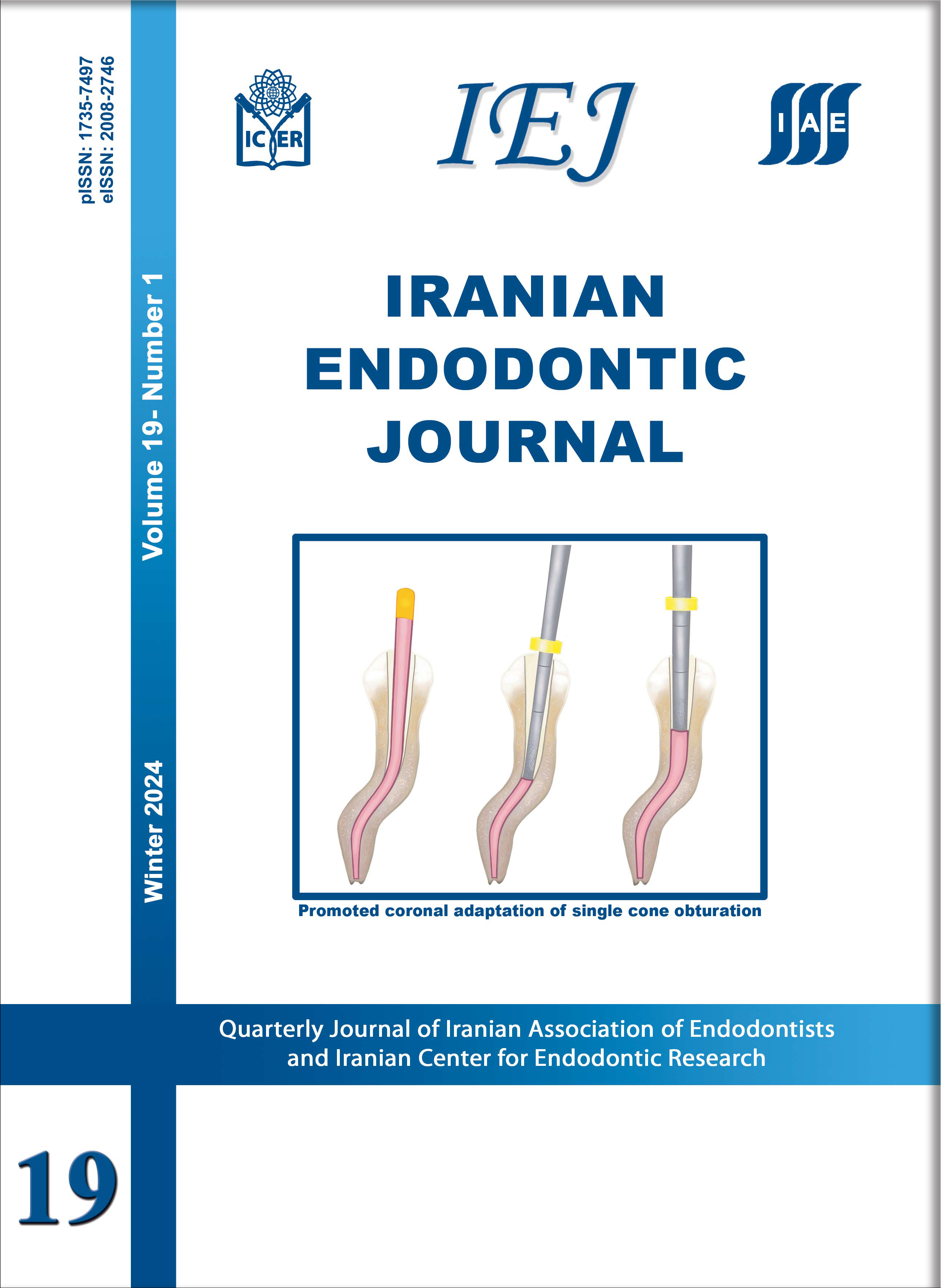Coronal and apical sealing ability of a new endodontic cement
Iranian Endodontic Journal,
Vol. 4 No. 1 (2009),
7 January 2009
,
Page 15-19
https://doi.org/10.22037/iej.v4i1.1133
Abstract
INTRODUCTION: This in vitro study aims to evaluate the coronal and apical sealing ability of gutta-percha (GP) root filling used with either mineral trioxide aggregate (MTA), new endodontic cement (NEC) or AH26 as filler/sealers. MATERIALS AND METHODS: Forty eight single-rooted extracted teeth were selected, decoronated and then instrumented. Samples were randomly divided into three experimental (n=12) and two control groups (n=6). In group 1, root canals were filled using lateral condensation technique (L); while single cone technique (S) was used for groups 2 and 3. AH26, MTA and NEC were the root canal sealer/fillers in groups 1, 2 and 3, respectively. Samples were immersed in 1% methylene-blue dye and then independently centrifuged apically and coronally. The roots were split longitudinally and linear extent of dye penetration was measured with a stereomicroscope from apical and coronal directions. Data were analyzed using One-way ANOVA and T-test. RESULTS: No statistical differences in mean apical dye penetration between groups LGP/AH26, SGP/MTA and SGP/NEC were found; SGP/NEC group showed significantly less coronal dye penetration (P<0.001). CONCLUSION: Considering the limitations of this in vitro study, it was concluded that the simple single cone technique with NEC can provide favorable coronal and apical seal.
- Dental leakage
- Endodontics
- Filling
- Mineral trioxide aggregate
- New material.
How to Cite
- Abstract Viewed: 260 times
- PDF Downloaded: 186 times




